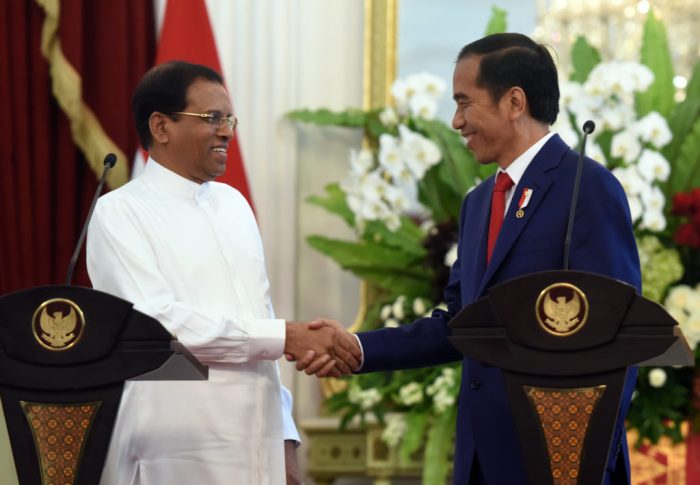Sri Lankan Tea Industry Overview
Sri Lanka, formerly known as Ceylon, boasts a rich history of tea production, dating back to the 19th century. The introduction of tea cultivation by the British transformed the country’s landscape and economy, establishing Sri Lanka as a global leader in the tea industry. Today, tea remains a cornerstone of Sri Lanka’s economy, contributing significantly to its export earnings and providing employment to a large segment of the population.
Major Tea-Producing Regions
Sri Lanka’s diverse topography and climate create ideal conditions for tea cultivation. The island is divided into several major tea-producing regions, each with unique characteristics that influence the flavor and quality of the tea produced.
- Central Highlands: Known for its high elevation, cool climate, and fertile soil, the Central Highlands produce a significant portion of Sri Lanka’s tea. This region is renowned for its robust, full-bodied black teas with a distinctive malty flavor.
- Uva Region: Located in the eastern part of the country, the Uva Region is known for its high-quality teas with a delicate floral aroma and a slightly astringent taste. The region’s unique terroir, characterized by dry weather and high elevation, contributes to the distinctive flavor profile of Uva teas.
- Dimbula Region: Nestled between the Central Highlands and the Uva Region, Dimbula is known for its medium-bodied teas with a smooth, mellow flavor. The region’s unique blend of high elevation and rainfall creates ideal conditions for producing a balanced and refreshing tea.
- Nuwara Eliya: Located in the heart of the Central Highlands, Nuwara Eliya is known for its high-quality teas with a delicate, floral aroma and a light, refreshing taste. The region’s cool climate and fertile soil produce teas with a unique character that is highly prized by tea connoisseurs.
- Kandy Region: Located in the central part of the island, Kandy is known for its diverse range of teas, from robust black teas to delicate green teas. The region’s unique blend of elevation, rainfall, and soil types creates ideal conditions for producing a variety of teas with distinct flavor profiles.
Types of Tea Produced
Sri Lanka is renowned for its diverse range of teas, encompassing black, green, and white varieties. Each type of tea undergoes a unique processing method that influences its flavor and aroma.
- Black Tea: The most common type of tea produced in Sri Lanka, black tea is fully oxidized, resulting in a dark brown color and a robust flavor. Sri Lankan black teas are known for their malty, earthy, and sometimes floral notes, depending on the region and the processing method used.
- Green Tea: Green tea is minimally oxidized, resulting in a light green color and a delicate, grassy flavor. Sri Lankan green teas are known for their refreshing, slightly astringent taste and their delicate, floral aroma.
- White Tea: White tea is the least processed type of tea, made from young tea buds and leaves that are not withered or rolled. Sri Lankan white teas are known for their delicate, sweet flavor and their light, airy texture.
The Role of Technology in the Sri Lankan Tea Industry
The Sri Lankan tea industry, renowned for its high-quality tea, is embracing technology to enhance production, processing, and quality control. From smart farming practices to innovative processing techniques, technology is transforming the industry, leading to improved efficiency, sustainability, and quality.
Impact of Technology on Tea Production
Technology is playing a pivotal role in improving tea production in Sri Lanka, ensuring optimal yields and sustainable practices.
- Precision Agriculture: Farmers are utilizing GPS-guided tractors and drones for precise application of fertilizers and pesticides, minimizing waste and environmental impact. This data-driven approach optimizes resource allocation and enhances tea plant health.
- Weather Monitoring Systems: Real-time weather data helps farmers predict and adapt to changing weather conditions, enabling them to make informed decisions regarding irrigation, pest control, and harvesting.
- Soil Sensors: Sensors monitor soil moisture and nutrient levels, providing valuable insights for efficient irrigation and fertilization, ensuring optimal tea plant growth.
Innovative Technologies in Tea Processing
Tea processing is undergoing a technological revolution, leading to improved quality, efficiency, and consistency.
- Automated Withering: Automated withering systems use controlled airflow and temperature to dry tea leaves, ensuring consistent quality and reducing manual labor.
- Advanced Rolling Machines: Sophisticated rolling machines optimize leaf breakage and oxidation, contributing to the unique flavor and aroma of Sri Lankan tea.
- Automated Sorting and Grading: Automated sorting and grading systems utilize advanced cameras and sensors to classify tea leaves based on size, shape, and color, ensuring consistent quality and reducing human error.
Technology’s Impact on Tea Workers, Sri lankan teek hacks president website
The integration of technology has had a profound impact on the livelihoods of tea workers in Sri Lanka.
- Improved Working Conditions: Automated processes have reduced manual labor, leading to safer and more ergonomic working conditions for tea workers.
- Enhanced Skills and Training: The adoption of technology has created a demand for skilled workers, requiring training and upskilling in areas such as machine operation and data analysis.
- Increased Productivity and Wages: Improved efficiency and quality due to technology have led to increased productivity and, in turn, higher wages for tea workers.
The President’s Website and Its Relevance to Tea: Sri Lankan Teek Hacks President Website
The President’s website serves as a vital platform for disseminating information and promoting various initiatives related to the Sri Lankan economy, including the tea industry. It acts as a central hub for showcasing the government’s policies, strategies, and achievements in supporting the tea sector’s growth and development.
The President’s Website as a Platform for Tea Promotion
The President’s website plays a significant role in promoting Sri Lankan tea both domestically and internationally. It serves as a valuable resource for stakeholders, including tea producers, exporters, and consumers, providing information on:
- Tea Industry Statistics and Performance: The website regularly publishes data on tea production, exports, and market trends, providing insights into the industry’s performance and potential. This information can be beneficial for stakeholders in making informed decisions.
- Government Initiatives and Policies: The website highlights government programs and policies aimed at supporting the tea industry, such as research and development, quality improvement initiatives, and market access programs. This information helps stakeholders understand the government’s commitment to the tea sector and its role in fostering growth.
- Tea-related Events and Conferences: The website promotes upcoming tea-related events, conferences, and exhibitions, providing opportunities for stakeholders to network, share knowledge, and explore new market opportunities.
The President’s Website as a Platform for Tea Development
Beyond promoting Sri Lankan tea, the President’s website also plays a crucial role in supporting the tea industry’s development. This includes:
- Promoting Investment and Collaboration: The website highlights investment opportunities in the tea sector, attracting foreign and domestic investors to contribute to the industry’s growth. It also promotes collaboration among stakeholders, fostering partnerships and knowledge sharing.
- Enhancing Sustainability and Innovation: The website showcases initiatives aimed at promoting sustainable tea production practices and encouraging innovation in the industry. This includes initiatives related to climate change adaptation, water conservation, and the development of new tea varieties and processing techniques.
- Addressing Challenges and Opportunities: The website provides a platform for discussing challenges and opportunities facing the tea industry, fostering dialogue and seeking solutions to ensure its long-term sustainability and competitiveness.
Sri lankan teek hacks president website – The Sri Lankan tea industry is on a journey of transformation, driven by technological advancements, innovative practices, and a renewed focus on quality. The President’s website serves as a crucial platform for connecting the industry with stakeholders, promoting sustainable practices, and fostering a brighter future for Sri Lankan tea. As we explore the intricacies of tea production, the global market, and the impact of “tea hacks,” we gain a deeper understanding of this vital industry and its potential for continued success.
So, you’re curious about the Sri Lankan teek hacks president website? It’s definitely a wild ride, filled with conspiracy theories and questionable information. But hey, maybe you’re also interested in how T-Mobile shipped out the infamous Galaxy Note 7, a phone known for its explosive tendencies. t mobile shipping galaxy note 7 Just remember, while those tech-related mysteries might be intriguing, the Sri Lankan teek hacks website is probably best left untouched.
You never know what kind of digital rabbit hole you might fall down!
 Standi Techno News
Standi Techno News

